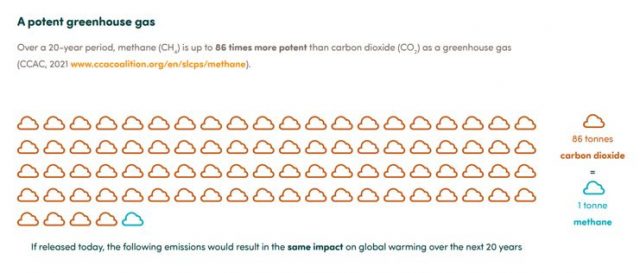COP 27: Why methane reduction needs to be high on the agenda
As COP 27, hosted by Egypt this year, launched at the Red Sea resort of Sharm El-Sheikh, the global biogas industry is using this as an opportunity to demand recognition of what Anaerobic Digestion (AD) technology can achieve in the fight against climate change. The World Biogas Association (WBA) is attending COP 27 and will be arguing that reducing methane emissions is the most effective way to achieve Paris Agreement targets.
Let’s look at some of the key facts here: humans generate over 105 billion tonnes of organic waste every year, all of which releases methane as it decomposes. Methane is 86 times as potent as CO2 when it is released into the atmosphere. Over 100 countries signed a Global Methane Pledge at COP 26 in 2021, committing themselves to reducing global methane emissions by at least 30% of 2020 levels by 2030. This pledge is going to require many countries to put in place affordable and effective strategies quickly[1].
“Organic wastes are the third largest source of methane emissions, with untreated food waste, livestock manure and slurries, and sewage all emitting potent methane emissions,” said Charlotte Morton, Chief Executive of the World Biogas Association. “Collecting these wastes separately and recycling them into a range of valuable bioproducts, including biogas, biomethane and biofertilisers, through anaerobic digestion, could rapidly deliver 50% of the Global Methane Pledge, and enough green gas to replace a third of today’s fossil natural gas consumption.”
The Global Carbon Project estimates that the 332 million tonnes of methane that were emitted in 2020 will drive the same warming as 8,300 metric tonnes of CO2 over a 100-year period. Since 2000 methane emissions have increased year on year. Without immediate action emissions will continue to increase through the decade.

Most worryingly, according to the World Meteorological Organisation (WMO), methane concentrations in the atmosphere soared in 2021, the biggest year-on-year increase in global methane concentrations since the WMO began tracking them. The amount of methane lingering in the atmosphere in 2021 was 262% of what it was before the industrial revolution[2].
Because AD is a mature technology, it can be deployed within a few years[3]. A plant will typically take about two years to build if the right regulatory framework is in place to support it. The WBA says that countries urgently need to put in place the required regulatory framework, including the organic waste collection infrastructure necessary to ensure wastes go to AD for treatment.
The Global Methane Pledge (GMP) made at COP 26 agreed that rapidly reducing methane emissions from energy, agriculture and waste is regarded as the single most effective strategy to keep the goal of limiting warming to 1.5 degrees Celsius[4]. 120 countries have now signed the GMP, with the notable exception of China.
Recycling all organic wastes through AD would generate enough biomethane to replace one third of global fossil natural gas consumption. Not only that, but the WBA estimates that full deployment of AD and biogas globally would create as many as 11-15 million jobs worldwide. Ultimately, biogas as a sector offers the world a tool to help it to manage and reduce methane emissions and quickly.
[1] World Biogas Association (WBA) | COP27 – World Biogas Association to highlight the critical role of preventing methane emissions from organic wastes in delivering the Global Methane Pledge
[2] There was a record-breaking increase in methane in Earth’s atmosphere last year – The Verge
[3] World Biogas Association (WBA) | COP27 – World Biogas Association to highlight the critical role of preventing methane emissions from organic wastes in delivering the Global Methane Pledge
[4] Homepage | Global Methane Pledge

